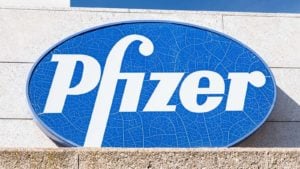InvestorPlace - Stock Market News, Stock Advice & Trading Tips
Each industry within the stock market has its own unique set of factors that determine the success of stocks in that niche. Pharmaceutical stocks are no exception. Investors looking to take positions in pharmaceutical shares need to consider the unique factors that drive the industry.
Analysts who judge the merit of these companies have to assess many considerations within a given pharmaceutical company. They have to consider the pipeline of drugs being developed, how successful that company has been in bringing drugs to market, patent rights and duration and the regulatory environment.
Then investors should consider more traditional factors such as income statements, balance sheets, cash flows and more. Although analysis of any industry is complex, it could be argued that pharmaceuticals are even more so.
Usually investors are looking for a longer timeline when investing in pharmaceuticals given the amount of time it requires to be successful in the industry. It wouldn’t be unusual to invest in a company in the industry and hold it for a decade.
In fact, that’s what this article is about — the top pharmaceutical stocks for the next 10 years. Let’s take a look:
- Pfizer (NYSE:PFE)
- Bristol-Myers Squibb (NYSE:BMY)
- AbbVie (NYSE:ABBV)
- Sanofi (NYSE:SNY)
- Takeda (NYSE:TAK)
- Novartis (NYSE:NVS)
- Johnson & Johnson (NYSE:JNJ)
Pharmaceutical Stocks: Pfizer (PFE)
 PFE) logo on Pfizer building. Pfizer is an American pharmaceutical corporation." width="300" height="169">Source: Manuel Esteban / Shutterstock.com
PFE) logo on Pfizer building. Pfizer is an American pharmaceutical corporation." width="300" height="169">Source: Manuel Esteban / Shutterstock.com
Pfizer is, of course, top of mind at present given its role in fighting Covid-19. The company has been central to the vaccine conversation since early on in the pandemic. Of course Pfizer now has been issued Emergency Use Authorization (EUA) by the Food and Drug Administration (FDA) along with partner BioNTech (NASDAQ:BNTX).
But according to industry experts, Pfizer might not expect a massive windfall from the vaccine. Mizuho analyst Vamil Divan explained:
“For Pfizer right now, we don’t think it’s going to be zero opportunity for them over time, but we also don’t think it’s going to be a $2 [billion] to $3 billion opportunity. And for a company Pfizer’s size, that’s what it takes to move the needle — it’s not a game-changing opportunity for Pfizer long-term.”
So while Pfizer/BioNTech’s vaccine may bring in reasonably strong profits in time, it’s not going to set Pfizer up for the coming decade.
To understand what will drive the future, investors need to consider Pfizer’s pipeline of drugs. The company operates across six therapeutic areas: anti-infectives, internal medicine, oncology, rare diseases, vaccines and inflammation and immunology. The pipeline includes 92 projects.
The company’s acquisitions of Array Biopharma and Therachon Holding AG, along with its joint venture with GlaxoSmithKline (NYSE:GSK) and pipeline, mean Pfizer should be strong for a long time.
Bristol-Myers Squibb (BMY)
 BMY) logo at the top of a cellphone." width="300" height="169">Source: Piotr Swat / Shutterstock.com
BMY) logo at the top of a cellphone." width="300" height="169">Source: Piotr Swat / Shutterstock.com
I recently argued in another article that Bristol-Myers Squibb is a strong pharmaceutical company to invest in due to its valuation and stable of revenue-generating drugs. The same thesis that I have for buying BMY stock now applies to buying it and holding it for the coming 10 years: Its strong revenues and patents will allow it to develop for a long time.
In the first three quarters of 2020, Bristol-Myers Squibb had seven drugs that each contributed at least $1 billion of revenue to the company. Three of those drugs sold more than $5 billion each.
The company is also quite cheap, based on its forward price-to-earnings (P/E) ratio of 8.5. Further, the company has strong patent protection for several of those revenue giants. Revlimid, the company’s best-selling drug, went off patent protection in 2019. Yet it remained the best seller through the first three quarters of 2020.
Eliquis is under patent protection through 2026 and 2031. Bristol-Myer Squibb’s Opdivo, its other $5-billion-seller this year, is protected from generic competition through 2026. BMY’s strong competitive moat makes it a great cheap stock to buy.
AbbVie (ABBV)
 ABBV) website and logo on mobile phone" width="300" height="169">Source: Piotr Swat / Shutterstock.com
ABBV) website and logo on mobile phone" width="300" height="169">Source: Piotr Swat / Shutterstock.com
AbbVie is relatively cheap right now over concerns about upcoming patent expiry on its best-selling drug Humira. Humira is expected to bring in $20 billion of sales out of a predicted $45.6 billion in 2020. Humira has experienced a halving in sales in certain European markets after going off patent protection. U.S. sales will take a hit when biosimilars reach the market in 2023.
Investors are clearly wondering if that will spell impending doom for ABBV stock, given how important Humira currently is to the company. AbbVie’s CEO believes that the company’s pipeline of drugs will more than shore up the balance sheet:
“Sales of the two new drugs [Skyrizi and Rinvoq] will exceed more than $15 billion by 2025, Gonzalez predicted. So if U.S. sales of Humira suffer a 45% hit from the arrival of biosimilars in 2023, Skyrizi and Rinvoq will take up the slack by at least 2025.”
If that turns out to be true, AbbVie should be able to fund development of its next blockbuster drugs beyond Skyrizi and Rinvoq. The company exhibits a strong record of capital allocation based on WACC (weighted average cost of capital) vs. ROIC (return on invested capital) of 5.17% vs. 13.51%. This indicates that the company produces an 8% premium and creates value with borrowed capital.
Sanofi (SNY)
 SNY) logo on the side of company branch in Germany" width="300" height="169">Source: nitpicker / Shutterstock.com
SNY) logo on the side of company branch in Germany" width="300" height="169">Source: nitpicker / Shutterstock.com
Next up on this list of pharmaceutical stocks is Sanofi. As of Sept. 30, the company had 34 treatments in Phase III and registration and 50 therapeutically indicated treatments in Phases I and II. Wall Street is keen on SNY stock, having rated it as overweight.
Current valuation makes SNY shares attractive now. But its future strategy makes it attractive for the next 10 years. Sanofi shares carry a P/E ratio in the 90th percentile among peers. One way to understand this is to say that out of 10 pharmaceutical peer stocks, a dollar of Sanofi’s earnings will be cheaper than nine of them.
So Sanofi is relatively cheap now, but its strategy for the future is why investors should take note. The company anticipates its anti-inflammatory drug Dupixent will achieve 10 billion EUR in peak sales.
Vaccines should bring in revenues as another strategic asset class for the firm. It expects high compound annual growth rates (CAGR) within vaccines through 2025. Finally, the company has identified six potential blockbuster drugs that it has scheduled for launch in succession.
Takeda (TAK)
 Source: luchschenF / Shutterstock.com
Source: luchschenF / Shutterstock.com
It should be clear to investors that pipelines are bets on the future within the pharmaceutical industry. A company’s pipeline predicts its future. In drug development there is no alternative given the time required and the hurdles to overcome.
Takeda predicts that its pipeline will lead to $47 billion in revenues by 2030. For investors looking for a long-term play in pharma, there is little else to do but hope that such revenues come to be. Outside of those anticipated revenues there is another reason to be interested in TAK stock in the long run: It operates in Japan and serves an aging population.
The median age in Japan is 48.4 years with Americans exactly 10 years younger on average. Takeda’s solutions may find a lot of utility in the U.S. as it faces a demographic shift.
Although Takeda saw revenues decrease 4.2% between 2019 and 2020, it managed to increase profits by 15.7% in the same period. That speaks to the operational efficiency of the company.
Novartis (NVS)
 Source: Denis Linine / Shutterstock.com
Source: Denis Linine / Shutterstock.com
Novartis’s pipeline is deep and should give potential investors an idea of the timeline required for development of a drug for commercialization.
The company recently won a battle related to patent protection for its MS drug Gilenya. The drug generated $738 million in revenue in Q2, and the judgment protects it from generic competition through 2027.
Another reason to consider investing in pharmaceutical stocks is that they tend to pay dividends. Because Novartis is a Swiss company, it only pays an annual dividend. Depending on the jurisdiction this can be advantageous for tax purposes.
Novartis is harnessing the advances in analytics and has developed its own platform called Nerve Live. The company’s head of Predictive Analytics in Drug Development, Dr. Luca Finelli explains:
“We are used to generating and working with huge amounts of data, analyzing it, and using this knowledge to research and develop new therapies. If we are able to bring our data into one place and tap into the latest computing technologies, we can generate new insights that in the past were difficult to obtain because our data was locked in silos.”
Johnson & Johnson (JNJ)
 Source: Alexander Tolstykh / Shutterstock.com
Source: Alexander Tolstykh / Shutterstock.com
My final pick for pharmaceutical stocks to buy is Johnson & Johnson. The company remains one of the leading names in healthcare and operates multiple businesses including Janssen, its pharmaceutical arm. Therefore an investment in Janssen is done through JNJ stock. For some investors this will make a lot of sense as a diversified strategy because the company is backed by Johnson & Johnson.
It also makes Janssen less risky than other pharmaceutical companies as development can be approached with a different strategy. The company’s pipeline includes a broad spectrum across six therapeutic areas.
JNJ stock is up 11.09% in the past year and remains a conservative play as a dividend aristocrat having no dividend reductions since 1982. Janssen’s sales have been steady over the past year. Total global pharmaceutical sales were up in Q3 by 5% year-over-year and rose by 5.2% through the first 3 quarters of 2020.
On the date of publication, Alex Sirois did not have (either directly or indirectly) any positions in the securities mentioned in this article.
Alex Sirois is a freelance contributor to InvestorPlace whose personal stock investing style is focused on long-term, buy-and-hold, wealth-building stock picks. Having worked in several industries from e-commerce to translation to education and utilizing his MBA from George Washington University, he brings a diverse set of skills through which he filters his writing.”
The post The Top 7 Pharmaceutical Stocks for the Next 10 Years appeared first on InvestorPlace.
The views and opinions expressed herein are the views and opinions of the author and do not necessarily reflect those of Nasdaq, Inc.


